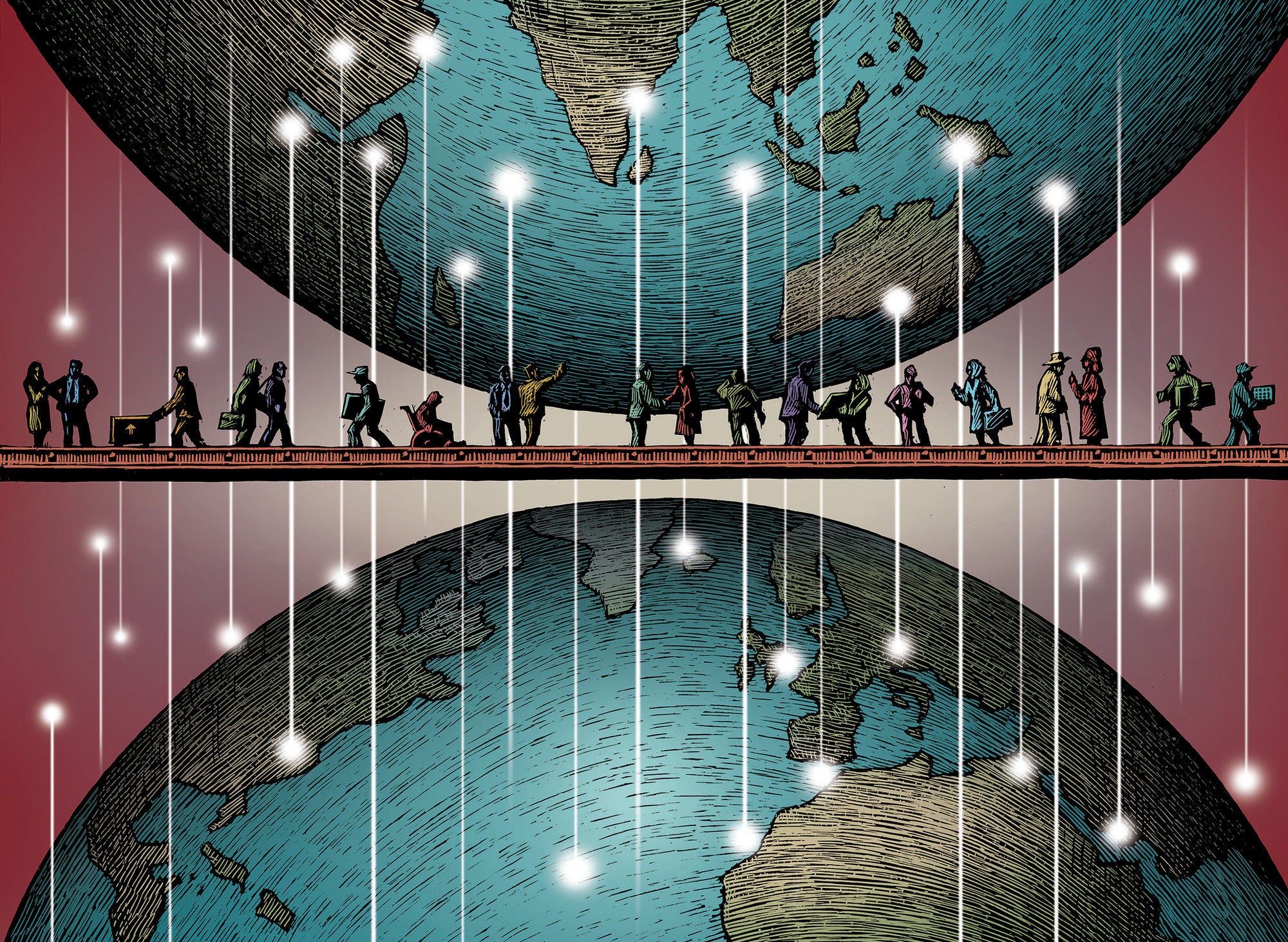Between July 2019 and June 2020, Australia received 163 000 new immigrants on a long-term or permanent basis (including changes of status), ‑15% compared to 2018. This figure comprises 27% labour migrants, 59% family members (including accompanying family), 8% humanitarian migrants and 6% immigrants benefitting from free mobility. Around 123 000 permits were issued to tertiary-level international students and 202 000 to temporary and seasonal labour migrants.
India, China and the United Kingdom were the top three nationalities of newcomers in 2019. Among the top 15 countries of origin, Nepal registered the strongest increase (900) and the Philippines the largest decrease (‑1 700) in flows to Australia compared to the previous year.
In 2020, the number of first asylum applicants decreased by ‑29.8%, to reach around 19 000. The majority of applicants came from Malaysia (4 000), China (2 300) and India (1 800). The largest increase since 2019 concerned nationals of Timor-Leste (300) and the largest decrease nationals of Malaysia (‑3 100). Of the 26 000 decisions taken in 2020, 10.2% were positive.
Emigration of Australians to OECD countries increased by 13% to 36 000 in 2019. Approximately 30% of this group migrated to the United Kingdom, 21% to New Zealand and 13% to Japan.
Australia maintained the Migration Program planning level at 160 000 places for 2020‑21, although there were changes to the allocations for specific categories. Family category places were increased significantly, from 47 732 places to 77 300 places. This brought the total proportion of Family places in the Migration Program to 48% – the highest it has been since 1995‑96. Further, Skilled category places were reduced from 108 682 to 79 600 places. Both the Global Talent and the Business Innovation and Investment Programs have seen significant growth in both volume and proportion of places in the Skilled category. There are 100 places set aside for Special Eligibility and 3 000 places for children noting that places for children are an estimate only and not subject to the Migration Program ceiling).
In August 2020, Hong Kong, China passport holders who held temporary graduate or temporary skilled visas received a five‑year extension. Hong Kong, China passport holders that apply for new temporary graduate or temporary skilled visas will be granted a visa with a validity of five years. Additionally, Australia is developing a permanent residency pathway for Hong Kong, China passport that reside in Australia for five years on temporary skilled or temporary graduate visas, or three years for those who choose to reside in a regional area.
In September 2020, Australia established the Global Business and Talent Attraction Taskforce to support Australia’s post-COVID‑19 economic recovery. The Taskforce provides eligible enterprises with the facilitated relocation of executives and their critical staff to Australia. The Global Talent visa is the primary visa used by the Taskforce, and individuals who meet the visa criteria gain direct access to permanent residence and priority visa processing.
In April 2021, Australia introduced major reforms to improve access to its largest settlement programme, the Adult Migrant English Program (AMEP). AMEP assists migrants and humanitarian entrants to learn English, understand Australian systems and build confidence and skills to successfully settle in Australia. Legislative amendments to the Immigration (Education) Act 1971 removed the previous 510 hour limit to provide unlimited hours of tuition; extended the eligibility threshold of the programme from functional to vocational English; and removed time limits on registration, commencement and completion of tuition for eligible migrants who first arrived in Australia on or before 1 October 2020. These changes mean more migrants and humanitarian entrants can now access government-funded English tuition for longer and until they reach a higher level of proficiency.
Throughout 2020 Australia introduced temporary visa arrangements in response to COVID‑19 to support public health measures, support critical sectors and assist with economic recovery. From April 2020, a COVID‑19 Pandemic event visa was created to assist with regularising the visa status of individuals in Australia working in critical sectors such as health, aged and disability care, childcare, agriculture and food processing during the pandemic. Further, COVID‑19 Pandemic Event visa holders working in the medical sector and other critical sectors can count this work towards qualifying for a second or third Working Holiday Maker visa. In September 2020, the Priority Migration Skilled Occupation List (PMSOL) was created for people with critical skills to aid the recovery of the Australian economy post-COVID‑19. PMSOL occupations receive a higher visa processing priority than other occupations. The PMSOL is based on labour market advice from the National Skills Commission and is subject to regular review.
For further information:

